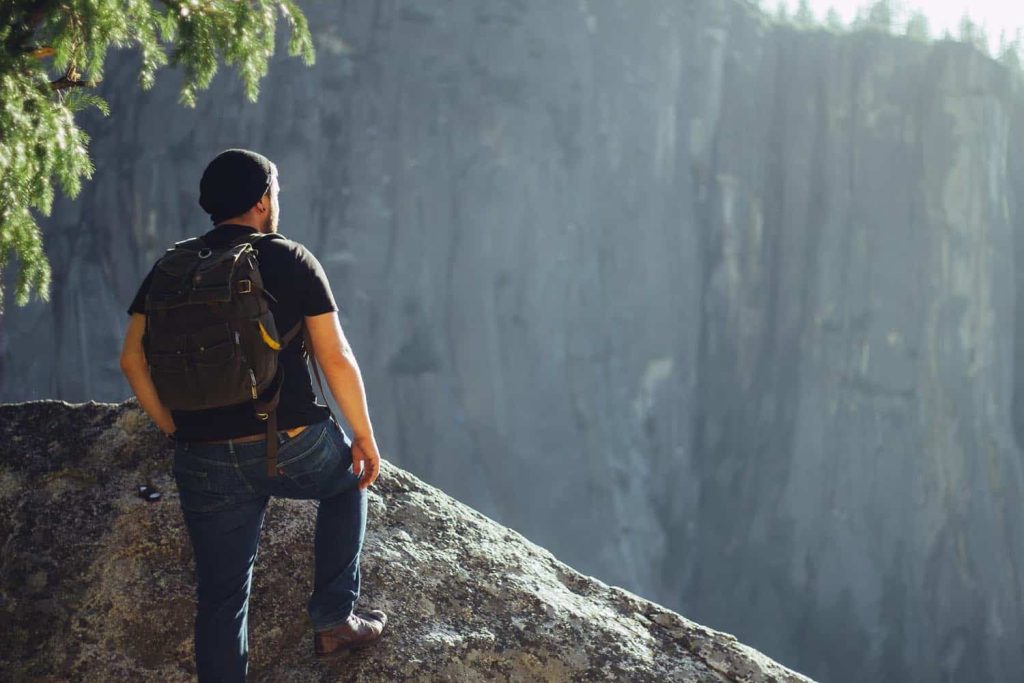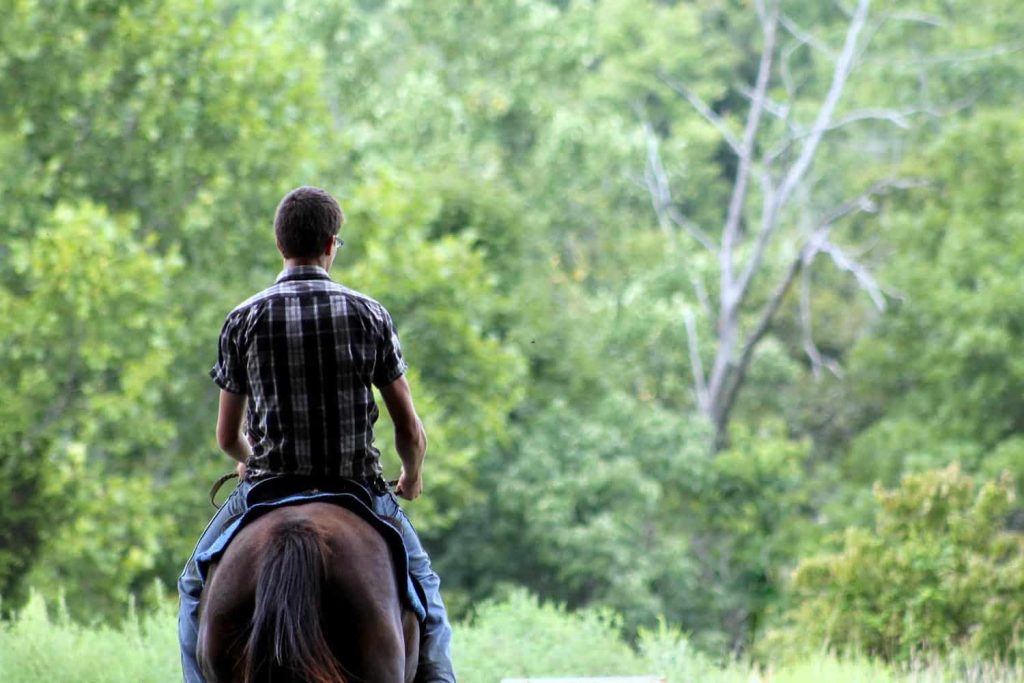At first glance, Guadalupe Mountains National Park might appear desolate and remote, but visitors find a region that reaches from the desert floor to the highest mountain in Texas. In the towering cliffs of El Capitan lie the remnants of an ancient marine fossil reef, the largest in the world.
Carved out of these imposing mountains sits an interior of sheer-sided canyons, white gypsum sand dunes, and a habitat so sweeping in its diversity that over 1,000 plant species and a variety of 60 mammal groups live here.
A peek into the park will overwhelm travelers with its grandeur and humble existence as they realize it’s been hiding in plain sight all along!
Why Visit Guadalupe Mountains National Park in an RV?

The park has two campgrounds that accept smaller RVs, and the area is large enough to spend several days exploring. Rather than driving two to three hours back to an RV park or motel in the city every evening, most travelers opt to boondock in their motorhomes or trailers.
Having your home with you provides a great platform from which to venture out into the wilderness. And Guadalupe Mountains National Park is a perfect companion to visit alongside Carlsbad Caverns National Park, which is located just 32 miles north.
When to Visit Guadalupe Mountains National Park

With a location in the Chihuahua Desert, this park hits temperatures over 100 degrees in summer. So, most visitors enjoy the cooler season to explore the desert floor. However, mountain peaks are much more temperate for hikers, and those looking for fall colors won’t be disappointed by coming to the Guadalupe Mountains in October and November.
Guadalupe Mountains National Park in the Spring
The spring season often brings warm and mild temperatures with occasional showers.
Guadalupe Mountains National Park in the Summer
Much like spring, summer temperatures are warm and mild, although they climb to 100 degrees or more toward the middle of the season.
Guadalupe Mountains National Park in the Fall
Fall brings cooler temperatures and high winds occasionally exceeding 70 miles per hour.
Guadalupe Mountains National Park in the Winter
Freezing fog and snow is common in winter, especially in December and January.
Where to Stay

There are two campgrounds within the park that have room for smaller RVs, and each is equipped with bathrooms. However, there are no RV hookups or showers. The campgrounds are located at Pine Springs and Dog Canyon.
Staying Outside the Park
Several campgrounds are nearby if you’re looking to stay outside the park.
- Bud’s Place RV Park & Cabins: Located about 50 minutes away.
- Bonnie & Clyde’s Getaway RV Park: Located about 1 hour away.
- Sun West Mobile City: Located about 44 minutes away.
- Carlsbad RV Park & Campground: Located about 43 minutes away.
Invest in a Good Sam Membership and save 10% on nightly stays at all Good Sam campgrounds.
Tips for Your Camping Stay
There are three developed campgrounds in the Guadalupe Mountains that are all open year-round for tent and RV camping. The campsites in both the Pine Springs and Dog Canyon campgrounds allow reservations up to six months in advance.
- Pine Springs Campground Reservations
- Dog Canyon Campground Reservations
- Frijole Horse Corral Campground Reservations
Please remember that quiet hours are from 8:00 PM to 8:00 AM, and generators may not be used during these hours.
How to Get Around Guadalupe Mountains National Park

Getting to the National Park is not difficult, but the location is a bit remote. The park is located 110 miles east of El Paso, Texas, or 56 miles southwest of Carlsbad, New Mexico, in the Chihuahua Desert on US Highways 62/180 or via New Mexico State Road 137.
Once there, roads through the park go only to the following: Pine Springs Visitor Center and campground, McKittrick Canyon Contact Station, Frijole Ranch, Salt Basin Dunes area, Williams Ranch (high clearance vehicles required), and the park trailheads.
Places to Go
There are plenty of fantastic places to go in the Guadalupe Mountains National Park. Below are some spots you must check out during your visit.
Dog Canyon
A remote forested canyon on the north end of the park, Dog Canyon lies at the base of steep cliff walls. It’s a perfect place for hiking and camping in solitude.
McKittrick Canyon

One of the most visited locations in Guadalupe Mountains National Park, this canyon is splendid in the months of October and November, when autumn colors are at their peak. This is a day-use-only destination.
Williams Ranch
A high clearance vehicle is needed to access Williams Ranch, and travelers must check out a gate key at Pine Springs Visitor Center to traverse this rugged road for 15.6 miles. The ranch house backs up to Bone Canyon.
Frijole Ranch
This old ranch on the edge of the Guadalupe Mountains is surrounded by six springs, a virtual oasis in the desert. The ranch headquarters building is home to the Frijole Ranch Historic Museum, telling the human story of the region from Native Americans to the formation of the national park.
Salt Basin Dunes
Gypsum has eroded into sand dunes here at the Salt Basin Dunes, in some places up to 40 feet tall. The wind is the sculptor and can make the area inhospitable on occasion, and the dunes are a designated day-use area, so no camping is allowed.
Things to Do in Guadalupe Mountains National Park

There are more than just places to go in the Guadalupe Mountains National Park. There are plenty of fun things to do, too. Here are some of the best!
Hiking
The park features more than 80 miles of hiking trails, which include the option to hike to the highest point in Texas. Here are just a few samples:
- Indian Meadow Nature Trail – 0.6 miles
- Marcus Overlook – 4.5 miles
- Lost Peak Trail – 6.4 miles
- McKittrick Canyon Nature Trail – 0.9 miles
- Pratt Cabin Trail – 4.8 miles
- The Grotto – 6.8 miles
- Permian Reef Trail – 8.4 miles
- Devil’s Hall Trail – 3.8 miles
- Guadalupe Peak Trail – 8.5 miles
Backpacking

If you enjoy hiking but want to stay in the backcountry longer, take a look at the packing information, trails, and campsites on the park’s backpacking page.
Wildlife Viewing
The diversity of ecosystems within Guadalupe Mountains National Park offers a habitat for various animals like mule deer, black bears, coyotes, mountain lions, and javelinas.
During warmer temperatures, reptiles like diamondback rattlesnakes and prairie lizards will soak up the sun. The best viewing is close to water sources like Smith Springs, Manzanita Spring, and McKittrick Canyon.
Horseback Riding

Bring your own horses and ride on open stock trails at the park. There are corrals at Frijole Ranch and Dog Canyon, and all horse trails begin and end at these locations. Riding off the trail is not allowed.
Birdwatching
The Guadalupe Mountains are an exceptional place to go birding. One of the best places to start is at Frijole Ranch, where water is more accessible, as are trees with shade. You’ll see everything from a roadrunner to mountain bluebirds, tanagers, and Cooper’s hawks throughout the park.
What to Bring and How to Prepare
Since you’ll be in the desert, planning ensures a safe and successful visit to Guadalupe Mountains National Park. A few things to bring and ways to prepare are:
- Water. There isn’t any water available, so make sure to carry plenty of water (at least one gallon per person, per day).
- Wear appropriate clothing. Think of coverage: hats, long sleeve shirts, long pants, and sunscreen to cover any skin you leave exposed.
- GPS or Map. Carrying a GPS or map can help if you get turned around inside the park.
- Backpack. Wearing a backpack with a flashlight (and the necessities listed above) inside allows your hands to be free as you explore.
Brief History of Guadalupe Mountains National Park

The first inhabitants of the Guadalupe Mountains were hunter-gatherers that followed game into the area about 10,000 years ago. Since then, the region has been influenced by the Spanish. Although they did not explore the mountain range, they forever changed the area by bringing horses.
Mescalero Apaches, like those that came before, tracked game through the Chihuahua Desert and utilized various parts of the prolific agave plants found there. In fact, visitors today might come across an agave roasting pit within the park.
After the Civil War, Americans began moving west. The Butterfield Overland Mail was established to transport passengers and mail east to San Francisco. Its trail ran through the park region, and cavalry troops, including Buffalo Soldiers, were assigned to protect the line. In that effort, two Apache camps were destroyed, and what was left of the tribe was eventually driven out of the area and to a reservation.
One of the first settlers to make a permanent home was rancher Felix McKittrick in the 1870s. By the 1920s, Wallace Pratt arrived. A geologist for what would later become Exxon Oil, Pratt fell in love with the McKittrick Canyon and built two homes there. In 1960, Pratt donated his 6,000-acre parcel to the National Park Service, and with the purchase of another 80,000 acres, the road was paved for Guadalupe Mountains National Park to be created in 1972.
Plan your next trip to the national parks in an RV. Rent an RV, trade-in your RV, or buy a new or used RV and start traveling for less than $5 a day.
Have you ever been to the Guadalupe Mountains National Park? Leave a comment below.










My wife and I visited Guadeloupe over Memorial and hiked the Peak, the highest mountain in TX at 8,751′ – it was the most challenging hiked I ever did but so worth it. After the first 2 miles, you settle in and your body adjusts. Coming down was more challenging but afterwards, you feel great and ready for the next adventure!